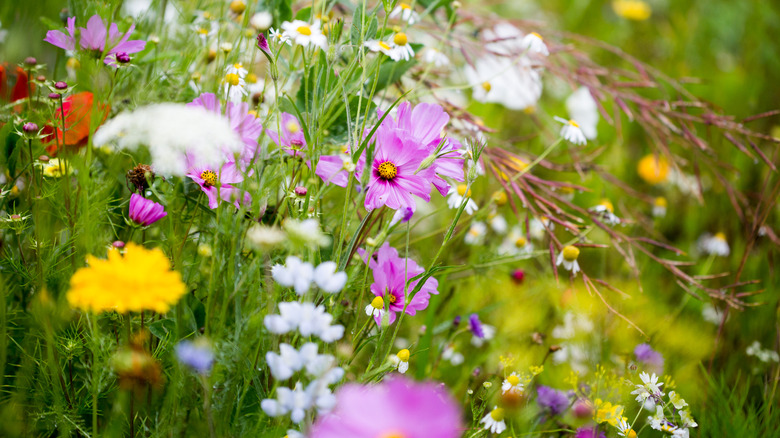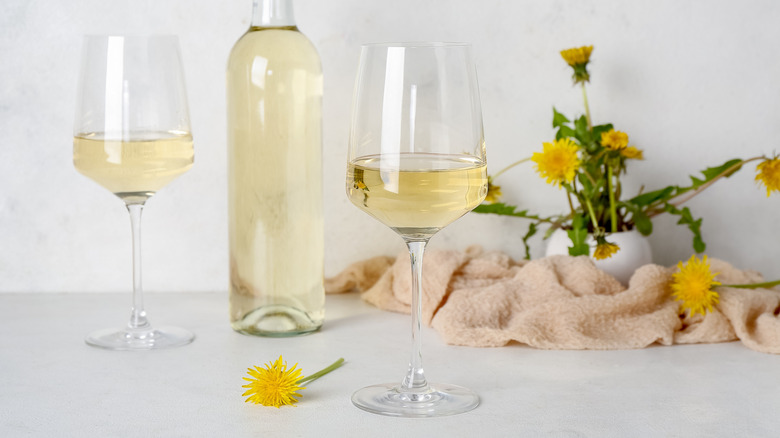You Only Need 4 Ingredients To Make A Floral Syrup Out Of A Common Garden Weed
Floral flavors are typically described as delicate, even though your homemade lavender syrup may taste soapy or bitter if you use the wrong ingredients or steep it too long. Trendy though lavender may be (Thanks, Starbucks!), today we're here to talk about a floral — or at least botanical — syrup of an entirely different nature. In these days of high food prices, the future of food may lie in foraging, and dandelion syrup can be made with a weed that's probably growing all over your lawn.
In addition to dandelion petals (those yellowy bits that make up the blossom) you'll only need sugar, water, and lemon juice. First, combine roughly equal amounts of petals and water with the juice of a lemon and simmer the ingredients for a minute or so. Then, cover the pot, stick it in the fridge, and allow the dandelion concoction to steep overnight. The next day, strain out the petals, then add about half as much sugar as liquid to the pot. Cook the syrup down until it reduces by half, then try your hand at making a dandelion oat milk latte.
While you may want to try straight-up dandelion syrup the first time you make it, a fruity version is also an option. In Scandinavia, where it goes by the name løvetannsirup, people sometimes add chopped green apples, rhubarb, or both.
Other ways to use up those dandelions
If you don't want to go all Starbucks with your dandelion syrup (Dandelion frap, anyone?), it can be mixed with seltzer for a tasty soda or used in place of simple syrup in an experimental cocktail. But even after making a batch or two, you'll probably still have more than a few dandelions overrunning your yard, so why not explore other dandelion recipes? Dandelion root can be roasted to make coffee in a pinch (Great Depression 101), but just about every other part of the plant is edible, too.
The blossoms can be dipped in batter and fried, while the greens can be made into a salad. Greens can also be used to make pesto or chimichurri, while both greens and stems can be sautéed or added to stir-fry. Dandelion wine has also been around since pioneer days and serves as a Proustian madeleine of sorts for the narrator of Ray Bradbury's 1950s novel of the same name.
Whatever you decide to make with your dandelions, though, there are two precautions you must take. The first and most crucial involves only using plants that you know haven't been sprayed with weed killer. The second is to rinse or soak them to make sure they're not hiding any insect life. From there, the world is your dandelion-flavored oyster.

